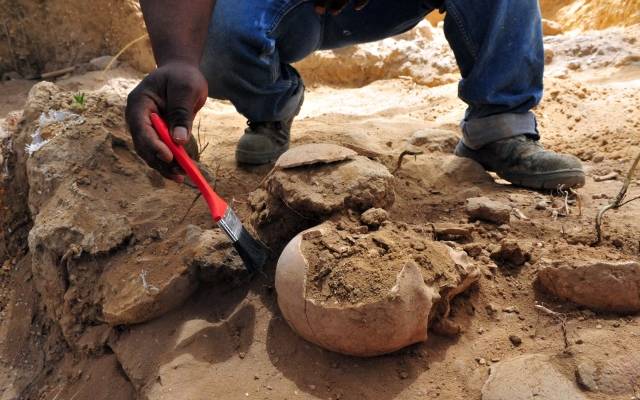“Into the channel’s mouth were swept the detritus of the life above Jerusalem’s main street, where they remained preserved between the walls just as they were at the moment of the city’s destruction,” explained excavation director.
By Pesach Benson, TPS
Archaeologists uncovered a treasure trove of artifacts in a 2,000-year-old drainage channel beneath Jerusalem’s streets, revealing a vivid narrative of prosperity, decay, and ultimate destruction during the Second Temple period, the Israeli Antiquities Authority announced on Tuesday.
The announcement coincided with Tisha B’Av, which marks the destruction of the First and Second Temples, and other tragedies which occurred on the ninth day of the Hebrew month of Av.
The channel served as a critical subterranean artery beneath the bustling markets of Jerusalem’s main street, running the entire length of the City of David.
“Into the channel’s mouth were swept the detritus of the life above Jerusalem’s main street, where they remained preserved between the walls just as they were at the moment of the city’s destruction,” explained excavation director Dr. Ayala Zilberstein of the Antiquities Authority.
“Small finds tell us a big story, from Jerusalem’s heyday of prosperity and splendor when its streets bustled with life, until the city’s ebbing moments during the rebellion against the Romans, and its total abandonment following the Temple and city’s destruction,” she said.
Among the most remarkable finds were a complete glass vial and ceramic lamps still bearing soot from ancient flames. These items, discovered in the upper layers of the alluvial soil, date back to the city’s destruction in 70 CE. The soot on the pottery lamps serves as a poignant reminder of the fires that once blazed in these vessels, possibly held by rebels who sought refuge in the channel during the Roman siege.
The excavation has also uncovered a wealth of artifacts from Jerusalem’s golden era. Complete vessels, including delicate perfume vials and oil lamps were found remarkably well-preserved.
Several years ago, a complete sword inside its scabbard was found in the area of the channel, and researchers are examining the possibility that the lamps were also used by the same rebels hiding from the Romans.
“Through this large variety of pots and dishes that accumulated in the drainage channel we encounter nearly the complete tableware set of Jerusalem’s residents,” Zilberstein said.
One of the most intriguing aspects of the excavation is the discovery of organic remains — grape pips, kernels of grains, fish bones, and even eggshells — offering insights into the ancient diet of Jerusalem’s inhabitants.
As the excavators dug deeper, they observed a striking shift in the composition of the layers, reflecting the city’s gradual decline. “The closer you get to the layers from the city’s later days – there is less and less evidence of human artifacts, and the picture begins to form of the demise of the city’s vitality,” Zilberstein explained.
The City of David is the original core of the ancient biblical city. Located just outside the southern walls of Jerusalem’s Old City, it is considered one of Israel’s most important archaeological sites. It is where King David established his capital and the site of many pivotal Biblical events. The park is best known for Hezekiah’s Tunnel, which was constructed by King Hezekiah to provide water to the city ahead of an Assyrian siege led by Sennacherib.
